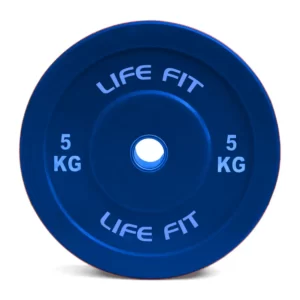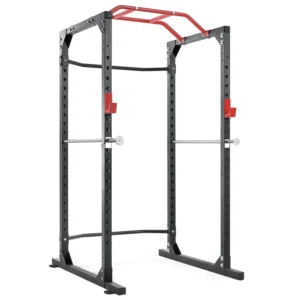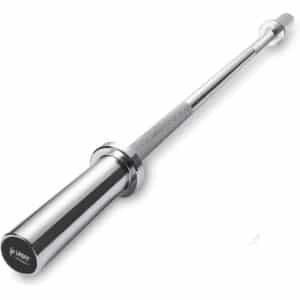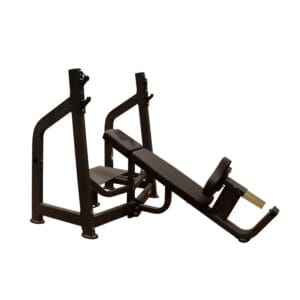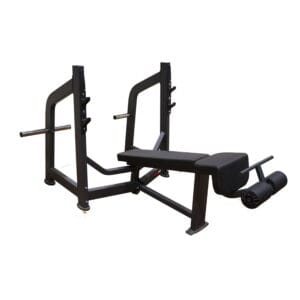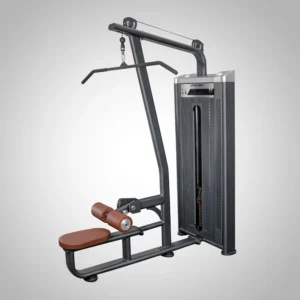Best Equipment for Chest Workout
-
 Multi Adjustable Gym Bench | Bench Press for Home Gym Rated 4.75 out of 5
Multi Adjustable Gym Bench | Bench Press for Home Gym Rated 4.75 out of 5₹34,999Original price was: ₹34,999.₹18,499Current price is: ₹18,499. Inc. 18% GST -
 High-Quality Hex Dumbbells for Strength Training Rated 4.75 out of 5₹899 – ₹4,499Price range: ₹899 through ₹4,499 Inc. 18% GST
High-Quality Hex Dumbbells for Strength Training Rated 4.75 out of 5₹899 – ₹4,499Price range: ₹899 through ₹4,499 Inc. 18% GST -
 Rubber Bumper Plates - Pair Rated 4.80 out of 5₹1,799 – ₹8,999Price range: ₹1,799 through ₹8,999 Inc. 18% GST
Rubber Bumper Plates - Pair Rated 4.80 out of 5₹1,799 – ₹8,999Price range: ₹1,799 through ₹8,999 Inc. 18% GST -
 LF-R100 Power Rack Rated 5.00 out of 5
LF-R100 Power Rack Rated 5.00 out of 5₹39,999Original price was: ₹39,999.₹27,999Current price is: ₹27,999. Inc. 18% GST -
 Elite Ironworks Olympic Barbell Rated 5.00 out of 5₹2,699 – ₹4,999Price range: ₹2,699 through ₹4,999 Inc. 18% GST
Elite Ironworks Olympic Barbell Rated 5.00 out of 5₹2,699 – ₹4,999Price range: ₹2,699 through ₹4,999 Inc. 18% GST -
 Hammer Strength Olympic Flat Bench
Hammer Strength Olympic Flat Bench
₹57,199Original price was: ₹57,199.₹39,999Current price is: ₹39,999. Inc. 18% GST -
 Olympic Incline Bench
Olympic Incline Bench
₹57,199Original price was: ₹57,199.₹39,999Current price is: ₹39,999. Inc. 18% GST -
 Olympic Decline Weight Bench
Olympic Decline Weight Bench
₹57,199Original price was: ₹57,199.₹39,999Current price is: ₹39,999. Inc. 18% GST -
 Assist Dip Chin | LIFE FIT
Assist Dip Chin | LIFE FIT
₹116,665Original price was: ₹116,665.₹69,999Current price is: ₹69,999. Inc. 18% GST -
 Incline Chest and Shoulder Press Machine | Multi Press Machine
Incline Chest and Shoulder Press Machine | Multi Press Machine
₹116,665Original price was: ₹116,665.₹69,999Current price is: ₹69,999. Inc. 18% GST -
 LIFE FIT Pro Lat Pull Down Machine
LIFE FIT Pro Lat Pull Down Machine
₹114,285Original price was: ₹114,285.₹79,999Current price is: ₹79,999. Inc. 18% GST
Home » Blog » Exercises » Chest Exercises » Mastering the Incline Bench Press: Build a Stronger Upper Chest
Mastering the Incline Bench Press: Build a Stronger Upper Chest
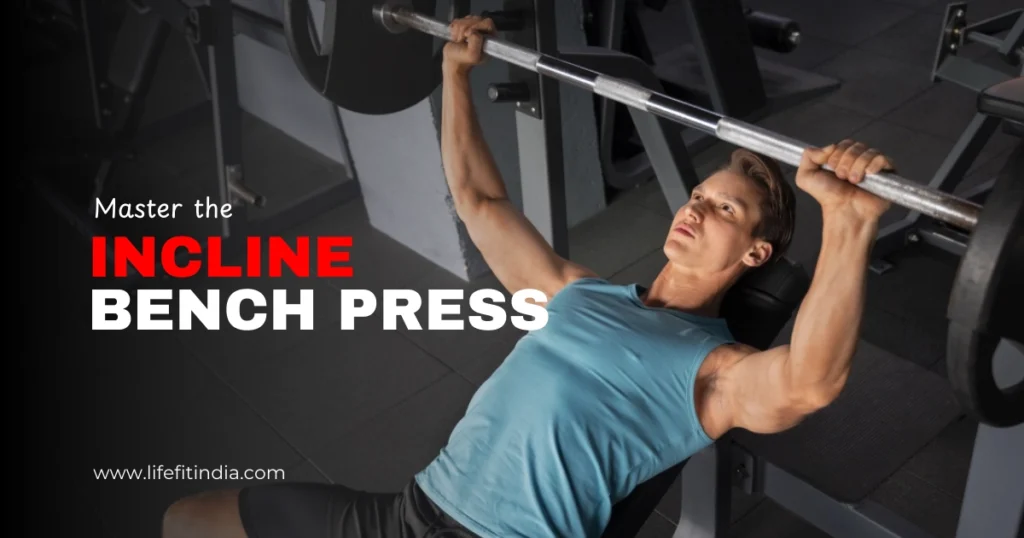
The incline bench press is a fundamental exercise in many strength training programs. While the flat bench press often gets more attention, the incline variation is particularly effective for targeting the upper portion of the chest muscles. Understanding how to perform this exercise correctly can significantly enhance your chest development and overall upper body strength.
This guide will walk you through the benefits, technique, and important considerations for incorporating the incline bench press into your workout routines.
Why Choose the Incline Bench Press?
Adding the incline bench press to your routine offers several advantages:
- Targeted Upper Chest Development: The primary benefit is its focus on the clavicular head of the pectoralis major, the upper section of your chest. Consequently, this helps create a fuller, more balanced look for the chest muscles.
- Shoulder Strength Contribution: The exercise also engages the anterior deltoids (front shoulders) and triceps, contributing to overall upper body pushing strength.
- Variety in Training: Incorporating incline presses adds variation to your chest workouts, preventing plateaus and stimulating muscles from different angles compared to flat or decline presses.
Muscles Worked During the Incline Press

The incline bench press primarily targets:
- Pectoralis Major (Clavicular Head): The upper portion of the chest muscle.
- Anterior Deltoid: The front part of the shoulder muscle.
- Triceps Brachii: The muscles on the back of your upper arm.
Besides these primary movers, stabilizer muscles in the shoulders and back also play a crucial role in maintaining proper form throughout the lift.
How to Perform the Incline Bench Press Correctly
Proper form is crucial for effectiveness and safety. Whether using a barbell or dumbbells, it’s important to follow these steps:
1. Setting Up the Incline Bench:
- Firstly, Adjust an incline bench to an angle typically between 15 and 45 degrees for your incline press. A 30 degree angle is often recommended as a starting point for effective upper chest activation without excessively stressing the shoulders. Nevertheless, You might need to experiment to find what feels best for you. Ensure the bench is stable within your squat rack or on its own.
- You can find high quality benches in our Benches & Racks collection, including options like the Life Fit Pro Series Olympic Incline Bench or an Adjustable Gym Bench.
2. Positioning:
- Next, Lie back on the bench, planting your feet firmly on the floor before starting the incline press.
- Maintain contact between your shoulder blades, buttocks, and the bench throughout the lift. Also, slightly retract your shoulder blades, pinching them together and driving them into the bench – a key part of incline press form.
3. Grip (Barbell):
- Grip the barbell slightly wider than shoulder width barbell incline press. Ideally, your forearms should be roughly vertical when the bar is at the bottom position. Use appropriate weight plates like Rubber Bumper Plates.
4. The Lift (Barbell):
- Unrack the bar with assistance from a spotter if needed, holding it directly above your upper chest/clavicle area.
- Then, take a deep breath and brace your core.
- Lower the bar slowly and under control towards your upper chest, keeping your elbows slightly tucked, not flared out wide. Aim for the bar to touch your upper chest lightly.
- Finally, exhale as you press the bar back up powerfully to the starting position, following the same path. Keep your shoulder blades retracted during the incline press movement.
5. Using Dumbbells:
- Alternatively, if using dumbbells incline press, start with them resting on your thighs. Kick them up one at a time to the starting position beside your chest, palms facing forward or slightly inward.
- Press the dumbbells upward in a slight arc, bringing them closer together at the top without letting them touch.
- After that, lower them slowly back to the starting position, maintaining control. Learn more about dumbbell exercises for arms.
Optimal Bench Angle
As mentioned, a 30 degree incline is a common recommendation incline bench press; research suggests this angle is often optimal for maximizing upper pec activation while minimizing excessive anterior deltoid strain. However, slight adjustments can change muscle emphasis:
- Lower Incline (e.g., 15 degrees): More overall pec involvement, similar to flat bench.
- Higher Incline (e.g., 45 degrees): Greater emphasis on the anterior deltoids.
Experiment within the 15 to 45 degree range to find the incline press angle angle that allows you to feel the upper chest working effectively without shoulder discomfort. Our adjustable benches offer flexibility here.
Common Mistakes to Avoid
Watch out for these common errors to maximize results and minimize injury risk:
- Incorrect Angle: Setting the bench too high can turn the exercise into more of a shoulder press. Too low, and it mimics a flat press.
- Excessive Elbow Flare: Letting your elbows flare out too wide puts unnecessary stress on the shoulder joints. Keep them slightly tucked.
- Bouncing the Bar: Using momentum by bouncing the bar off your chest reduces muscle tension and increases injury risk. Control the descent.
- Lifting Buttocks Off Bench: This changes the angle and reduces upper chest focus. Keep your glutes firmly planted.
- Not Controlling the Negative: The lowering (eccentric) phase is crucial for muscle growth. Don’t just let the weight drop; lower it under control.
Safety First
Always prioritize safety during strength training:
- Warm Up: Prepare your muscles with light cardio and dynamic stretching.
- Start Light: Master the form with lighter weights before progressing.
- Use a Spotter: Especially when using heavier weights with a barbell, have someone available to assist.
- Listen to Your Body: Stop if you feel sharp pain, particularly in the shoulders. Consider exercise recovery techniques.
Integrating Incline Presses into Your Workout
Incline bench presses can be a primary upper chest exercise in your routine. Include them alongside other chest exercises like the flat bench press or pec deck flyes for comprehensive chest development. Consider adding them to your home gym workout using versatile equipment like an adjustable bench and dumbbells.
For a complete setup, explore our strength machines and home gym equipment.
Conclusion
The incline bench press is a valuable exercise for anyone looking to build a stronger, more defined upper chest. By focusing on proper form, selecting an appropriate angle, avoiding common mistakes, and prioritizing safety, you can effectively incorporate this movement into your training regimen. Equip your home gym with the right benches and weights from Life fit India to master the incline bench press and achieve your fitness goals.


